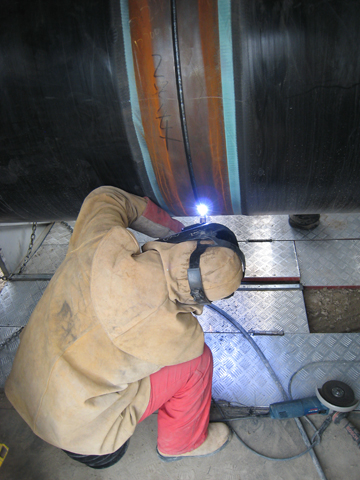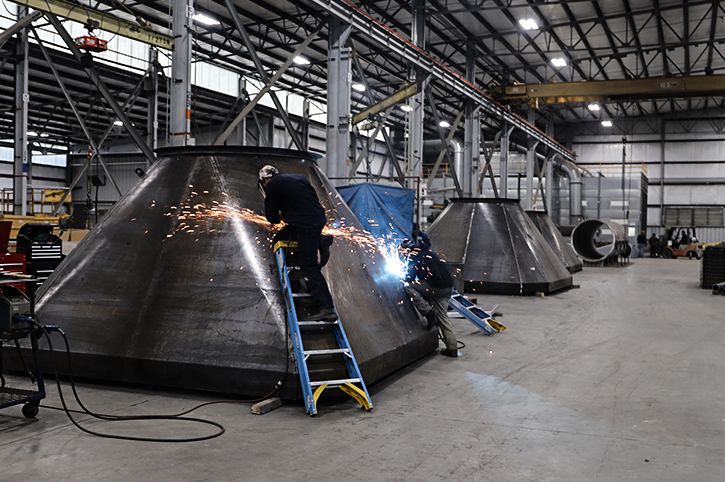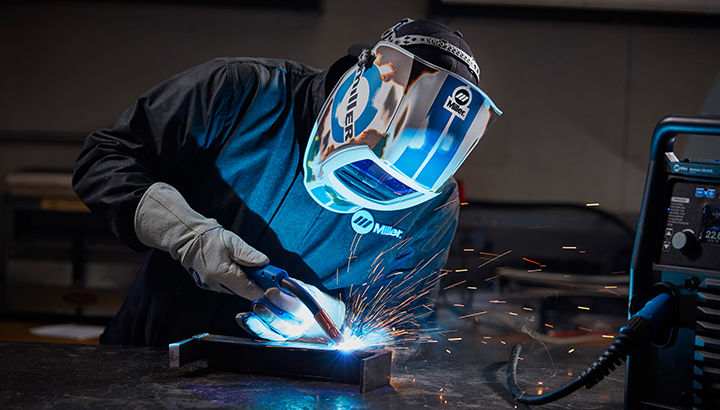Usual Welding Repair Service Issues and Exactly How to Address Them Efficiently
Welding repairs commonly experience a series of problems that can endanger the honesty of the final product. Usual troubles include inadequate penetration, porosity, and misalignment, amongst others. Each defect offers unique challenges that call for certain approaches for resolution. Comprehending these issues is necessary for welders intending to improve their abilities and end results. This discussion will certainly check out these common welding repair issues and reliable methods to address them.
Poor Penetration
Insufficient infiltration occurs when the weld steel stops working to fully fuse with the base material, causing weak joints and prospective structural failures. This issue often stems from not enough warm input, wrong electrode angle, or inappropriate welding rate. Welders may encounter poor penetration because of a miscalculation of the required parameters for a specific product thickness or type. Additionally, contamination on the base product's surface area can prevent efficient bonding, exacerbating the trouble. To attend to poor infiltration, welders must ensure ideal setups on their tools and keep a clean job surface. Routine inspection of welds is advised to determine any shortages early, enabling timely modifications and the prevention of jeopardized architectural honesty in welded settings up.
Porosity
Porosity is a common issue in bonded joints that shows up as small gas bubbles entraped within the weld metal. This flaw can compromise the honesty of the weld, causing minimized toughness and potential failing under tension. Belgrade. Porosity typically develops from contamination, dampness, or improper welding strategies, which permit gases to run away right into the molten weld swimming pool. To deal with porosity, welders ought to ensure correct surface prep work, preserve a clean workplace, and use ideal welding specifications. In addition, selecting the best filler material and shielding gas can alleviate gas entrapment. Normal evaluation and screening of welds can help identify porosity early, guaranteeing timely restorative actions are taken, thereby protecting the high quality and dependability of the bonded framework
Misalignment
Misalignment in welding can occur from different aspects, including inappropriate arrangement and thermal expansion. Understanding the source is crucial for efficient resolution. A number of correction strategies are readily available to realign parts and assure architectural integrity.
Sources of Imbalance
Welding misalignment often originates from a range of underlying concerns that can endanger architectural integrity. One key cause is inappropriate fit-up of components prior to welding, which can cause spaces and unequal surface areas. Variants in thermal growth during the welding procedure can also lead to distortion, specifically if the materials being signed up with have various coefficients of development. Additionally, insufficient securing and fixturing may fail to hold components firmly in position, leading to movement throughout welding. Inadequately kept equipment, consisting of welding machines and devices, may present variances in the weld bead, further adding to imbalance. Operator mistake, stemming from insufficient training or experience, can also play a significant role in producing misaligned welds.

Correction Strategies Readily Available
Dealing with imbalance effectively needs a combination of corrective techniques tailored to the specific issues available. One usual technique is using jigs or fixtures to hold elements in the appropriate setting during welding, guaranteeing regular positioning. Additionally, preheating the materials can help in reducing distortion and improve fit-up. For substantial imbalance, mechanical adjustment methods, such as utilizing hydraulic jacks or clamps, can be used to deal with the position prior to welding. Post-weld warm treatment might additionally be essential to ease stresses caused by imbalance. Finally, careful inspection and change throughout the setup stage can stop misalignment concerns from ending up being significant issues, advertising a smoother welding process and enhancing total structural integrity.
Distortion
Distortion is a typical obstacle in welding that can arise from numerous elements, including unequal cooling and heating. Comprehending the reasons of distortion is important for applying reliable prevention techniques. Resolving this concern not just enhances structural integrity yet also improves the general top quality of the weld.
Sources of Distortion
When subjected to the intense warmth of welding, materials typically undergo changes that can bring about distortion. This phenomenon mostly emerges from thermal development and tightening during the welding procedure. As the weld location warms up, the product expands; upon cooling, it acquires, which can produce inner anxieties. On top of that, uneven heating across a work surface can worsen these tensions, leading to bending or flexing. The type of material additionally plays a significant function; metals with varying thermal conductivity and coefficients of development might respond in a different way, resulting in unforeseeable distortions. Poor joint design and inadequate fixturing can add to imbalance throughout welding, boosting the chance of distortion. Comprehending these causes is essential for efficient welding fixing and avoidance methods.
Prevention Techniques
Efficient avoidance methods for distortion throughout welding concentrate on regulating heat input and guaranteeing correct joint design. Keeping a regular heat input aids to minimize thermal expansion and tightening, which can lead to distortion. Using methods such as pre-heating the workpiece can additionally decrease the temperature level slope, promoting uniform heating. Additionally, choosing suitable joint designs, such as T-joints or lap joints, can enhance security and decrease stress and anxiety concentrations. Executing correct fixturing to protect the workpieces in position even more aids in keeping alignment throughout the welding procedure. Ultimately, staggered welding sequences can distribute warm a lot more evenly, stopping local distortion. By applying these methods, welders can considerably lower the probability of distortion and improve the overall high quality of their welds.
Cracking
Splitting is a typical problem experienced in welding repair work, commonly arising from numerous factors such as incorrect air conditioning prices, product choice, or poor joint preparation. The incident of cracks can substantially jeopardize the honesty of the weld, bring about possible failings throughout operation. To resolve this issue, welders need to first assess the origin, guaranteeing that products are compatible and properly picked his response for the details application. Additionally, managing the air conditioning rate during the welding process is vital; rapid air conditioning can cause anxiety and bring about fracturing. Appropriate joint design and preparation additionally add to decreasing the risk. Executing these techniques can improve weld top quality and longevity, ultimately minimizing the possibility of breaking in finished weldments.

Insufficient Combination
A considerable issue in welding repair services is incomplete combination, which takes place when the weld steel does not appropriately bond with the base material or previous weld passes - Belgrade. This defect can result in weaknesses in the joint, possibly compromising the honesty of the welded framework. Variables adding to insufficient combination include inadequate heat input, incorrect welding technique, and contamination of the surfaces being joined. To resolve this concern efficiently, welders should ensure proper pre-weld cleansing and surface area preparation, in addition to readjust their welding criteria to attain ample penetration and blend. Normal assessment during the welding procedure can additionally aid determine incomplete combination early, enabling timely rehabilitative steps to enhance the general high quality of the weld
Overheating
While welding repair services can improve architectural stability, overheating presents a significant challenge that can cause product degradation. Extreme warm throughout welding can change the mechanical residential or commercial properties of steels, causing lowered strength, enhanced brittleness, and bending. This phenomenon is especially important in high-stress applications where architectural dependability is vital. Determining overheating can include visual examinations for staining or distortion, along with keeping track of temperature during the welding process. To mitigate the risks related to overheating, welders ought to employ proper strategies, such as managing warm input, adjusting traveling rate, and using suitable filler materials. automatic welding Furthermore, executing pre- and post-weld warm treatments can aid recover material residential or commercial properties and enhance the general top quality of the fixing, making sure long-lasting efficiency and safety.
Often Asked Concerns
What Are the Typical Signs of a Welding Issue?

Just How Can I Evaluate My Welds for Top quality?
To evaluate welds for quality, one can make use of aesthetic assessments, ultrasonic screening, and radiographic methods. Each method ensures structural integrity, identifies flaws, and validates adherence to defined criteria, eventually boosting the reliability of the welded joints.
What Safety and security Precautions Should I Take While Welding?
When welding, one ought to focus on safety by putting on suitable personal protective equipment, making certain correct air flow, securing flammable products away, preserving a clean office, discover here and knowing environments to stop accidents and injuries.
Can I Fix a Weld Without Remodeling the Entire Joint?
Fixing a weld without redesigning the entire joint is feasible, depending upon the damages (Fabrication). Strategies such as grinding, adding filler product, or utilizing a welding process can efficiently resolve particular imperfections while protecting the bordering structure
What Devices Are Necessary for Efficient Welding Repairs?
Vital tools for efficient welding repair services consist of a welding device, wire brush, mill, safety equipment, clamps, and filler products. Each tool plays a crucial function in making sure top quality and security throughout the fixing procedure. Porosity usually develops from contamination, dampness, or improper welding strategies, which permit gases to get away right into the molten weld pool. Inadequately maintained devices, consisting of welding equipments and tools, may present disparities in the weld grain, more contributing to imbalance. When subjected to the extreme warm of welding, products often undergo adjustments that can lead to distortion. Cracking is an usual issue experienced in welding repair work, usually resulting from different factors such as improper air conditioning prices, material choice, or inadequate joint preparation. A significant concern in welding repair work is insufficient combination, which takes place when the weld metal does not sufficiently bond with the base material or previous weld passes.